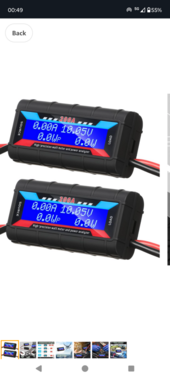haycord
New Member
I have seriously researched this but still cant get it. I do understand the obvious Max Voc limit for a Controller but I can't understand the 'why' behind the Max PV Input power limit. I must be wrong when I look at the Controller as any other normal 'electrical load' in that it would only pull the required current for the load regardless of a grossly oversized supply.
Take the Epever Tracer 40A for example: the Voc is 100V and the Max Input is 1040W/24V. I'm hung up on why an Array exceeding the 1040W would be a problem. My (apparently wrong) thinking is even if the Array was sized to 1400W the Controller would never pull more than the 1040W so nothing gets damaged. Please help me understand.
Take the Epever Tracer 40A for example: the Voc is 100V and the Max Input is 1040W/24V. I'm hung up on why an Array exceeding the 1040W would be a problem. My (apparently wrong) thinking is even if the Array was sized to 1400W the Controller would never pull more than the 1040W so nothing gets damaged. Please help me understand.



